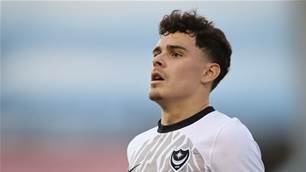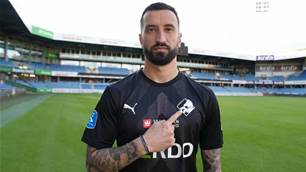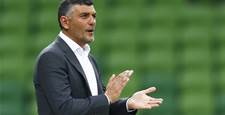DIZZY highs, miserable lows and landmark changes. Here are our top 50 moments, in no particular order, that shaped and defined Australian football as we know it today
Back-to-back World Cup qualification
The once unattainable dream has suddenly become the minimum requirement for football in this country.
Although Australia have figured in just two finals in the World Cup's 80 year history, the Socceroos were expected to qualify through Asia, despite a rather underwhelming performance in the Asian Cup the
previous year.
After becoming the second nation in the world to qualify for South Africa (without losing or conceding during the second stage of qualification), people then shrugged their shoulders in a blasé fashion at the Socceroos' stellar achievement.
While many graduates of Australia's many decades of footballing heartbreak grew frustrated at criticism over Pim Verbeek's pragmatic style, what the muted superlatives of back-to-back qualification actually defined was a shift in national expectations for the Socceroos.
The Socceroos travelled to Qatar in June needing just a point. They gained just that with the kind military-disciplined display they needed when playing Iran or Uruguay in those do-or-die qualifiers previously.
Qualification secured for a second consecutive time with two games to spare. Job done and expected from now on, too.
Mackay fires Australia to first ever WC finals
Against South Korea at the Hong Kong Stadium on November 13, 1973, the late Scottish-born Socceroo midfielder Jimmy Mackay cracked a long range drive past the Korean keeper Lee Sae Yun.
That sweet strike in the 70th minute proved the clincher to qualify Australia for their first ever World Cup in West Germany.
Barely a decade after admission into FIFA, Australia's part-time Socceroos beat the odds, the extraordinary travel, conditions and exotic opposition to book a place at the big event and, arguably, push the Socceroos into the top 16 of the world.
This game was the third in a fascinating trilogy. In October, Australia drew 0-0 against the South Koreans in Sydney, while a 2-2 draw a month later in Seoul meant the qualification path would go into a third game in neutral Honkers.
Last gasp Cheryl sets a new Matildas' target
"Our players on the park knew how much of a massive change that was for women's football in Australia," said former Matildas captain Cheryl Salisbury of her last gasp goal against Canada at the 2007 Women's World Cup in China.
"Before we were always the team that didn't quite get there, we were never the team that got the goal at the end. We became that team against Canada."
Reaching the quarters in 2007 set the platform for the future development of the women's game in Australia.
While the Matildas deservedly gained the plaudits at the time, it can be argued that Cheryl's goal had a direct effect on the launch of the W-League. At the very least it raised the women's game to new heights.
Harry takes us to the knockout stage
World Cup finals are rollercoasters of emotion, and despair was the prominent sentiment approaching the final 10 minutes of Australia's final group game against Croatia at the 2006 World Cup.
The Croats were leading 2-1 and heading through. Then a deep Bresciano ball from the right found its way through a crowded penalty box and to the feet of Harry Kewell, who managed to control the ball before lashing in from close range.
While the first Japan game was a historic opening victory, the benchmark for South Africa is the knockout stages and that's because Harry's goal against Croatia got us there four years ago.
"Australia's golden boy has come up with a golden goal," proclaimed FourFourTwo columnist and then SBS commentator Simon Hill at the time. "It just had to be Harry... the dream is back on." Long may the dream continue.
England 1 Australia 3
The Australia-England rivalry is one that spans across all sporting codes and, well, pretty much anything else we can argue or compete over...
While cricket's Ashes are seen as the common platform for the duel, beating the Poms back in 2003 at their national game in their own capital city has to be ranked as an all-time Australian victory.
Even today, the loss hurts the English, as they cling to excuses like, "it was only a friendly that didn't matter" and blaming Sven Goran-Eriksson's 11 half-time substitutions. But they still started with a full-strength team, including seven automatic starters in Gary Neville, Ashley Cole, Rio Ferdinand, Frank Lampard, David Beckham, Paul Scholes and Michael Owen.
Plus it was during that first half where a near unplayable Kewell and his teammates tore into England, first through a Tony Popovic header from a free-kick, then from a dizzy dribble and finish by Kewell which had the Poms on the rack and 2-0 down as the players went into the changing room.
David Beckham famously pleaded with Eriksson for the 'full strength team' to be given the opportunity to put right the first-half performance, but the coach refused.
The wholesales changes introduced five debutants for England and, in an even more damming slur on England's stars, the rookies faired better.
Francis Jeffers, the youngster Arsene Wenger paid $16m for before his career nosedived into obscurity soon after, got England back into the game at 2-1 and a 17 year-old Wayne Rooney won his first cap. But it was to little avail when Brett Emerton slid the ball home after good work by John Aloisi.
This may have only been an international friendly, but it's been the only meeting between the nations in the modern era.
The result gave confidence to our players, belief to our fans, but above everything else, it gave us bragging rights over the Poms and their inflated opinion of their abilities on the football pitch for a full six years
and counting...
Cheryl Salisbury makes world All Star team
While the men's game has a plethora of national and international competitions and accolades, the women's game has fewer platforms for rewarding the best players.
Behind the World Cup, the Women's World All Star games are seen as the elite showcase of female players and Matildas legend Cheryl Salisbury has twice been selected, much to the pride of Australia.
As you might expect the Women's World All Star team is dominated by the sport's leading nations such as Germany and USA, so to have an Aussie playing - and scoring - at the heart of the team's defence was an inspiration to female Aussie players.
"To have played twice in such a game was absolutely magnificent and I even managed to score a back post header in one of the games too," says Salisbury. "That really is the pinnacle of any sport, to be in a World All Stars team and score."
Government funding for the local game
What the game in this country had always lacked was backing from the big end of town.
That all changed when the extraordinarily persuasive businessman and football tragic Frank Lowy assumed power in the reconstituted national governing body.
Through Lowy's negotiations and influence as one of the richest men in the country, the new FFA secured vital seed money of around $15m from the government in 2003. It reflected a new-found confidence in the game and an understanding that, with a little push, it could blossom in a large way.
The money was the start of the business of reinvigoration of the national team. It went in part on assisting the most important elements of the new regime - namely the Socceroos' campaign for Germany 2006 and the setting up of the new A-League.
And the government must have been happy with their investment because a few years later they shelled out another $45m for the bid to host the 2018 or 2022 World Cups.
While the government had funded the game indirectly through the AIS and various sports commission projects before, direct funding was a massive breakthrough.
South Americans deny Socceroos a World Cup place... again and again
For years in Australia, South America was seen as the achilles heel of Australia's World Cup campaign; A final hurdle too tall to conquer.
No task was more mammoth than when taking on an Argentina team including Diego Maradona, Claudio Caniggia et al for a place at the 1994 World Cup. After a spirited 1-1 draw in Sydney, Argentina won 1-0 back at home. After the game Maradona famously remarked "your tears of pain will one day be tears of joy". He was right, but the wait was too long all the same.
Our heartbreaking loss to Iran in 1997 has been well chronicled, but the loss to Uruaguay in 2001 hurt just as much as it looked finally like we had the players to overcome a South American team.
A 1-0 win in Melbourne garnered false hope, with the return in the Centenario all one-way traffic as the Uruguayans ran out 3-0 winners.
The ultimate irony of our battles with the South Americans is it was only after we secured a move to the Asian Confederation that we managed to beat the hoodoo and qualify for the World Cup.
FFA go Dutch with new football blueprint
Grassroots football and youth development in this country has always been the elephant in the room.
Nowhere is this more apparent than in the recent results of our representative youth teams, whose performances in the Olympics and U20 World Cup have been distinctly underwhelming.
The solution to these issues was unveiled in May this year when FFA technical director Han Berger unveiled details of the new 'football curriculum', designed to revamp the game from grassroots up to the Socceroos and from the youngest players through to full pros.
The curriculum outline is broad and detailed, including mandatory use of the 4-3-3 formation at all age levels, while younger players will be encouraged to do more technical work with the ball and focus on their performances over the final results.
It is not an overnight plan, but a long-term one aimed at producing world stars and then delivering World Cup glory. Sounds great on paper; the reality is a waiting game...
Socceroos hit new low with Kiwi loss
If you've ever wondered what it was like to be a Socceroo fan before the current golden generation, this 2002 calamity encapsulated the frustration.
Just five years after "Iran" and a year after Uruguay inevitably knocked the 'Roos out of World Cup contention, OFC nation Australia's shot at redemption - and a desperately needed big pay day - was the Confederations Cup in France 2003.
All we needed to do was beat lightweight Oceania opposition at the New Zealand-hosted Oceania Nations Cup (which doubled as the qualifiers), and face the Kiwis in the final. We strolled through to the final but a Ryan Nelson header had the All-Whites celebrating a famous win.
More than that, it was the manner in which Australia was forced to approach this tournament. With the national body skint, the Socceroos under Frank Farina were a cobbled together, NSL-based national B team at best (Scott Chipperfield was the only overseas-based player - and he paid his own way to the tournament!).
A big pay day was squandered, we looked like amateurs - again - on the international stage and the fans continued to ask, 'How bad can this get?'
This embarrassing episode was one of the catalysts for the subsequent rebirth of the game in Australia.
Continues on next page
Related Articles

Socceroos midfielder embraces move to England

Cardiff City snap up sought-after Socceroos starlet













